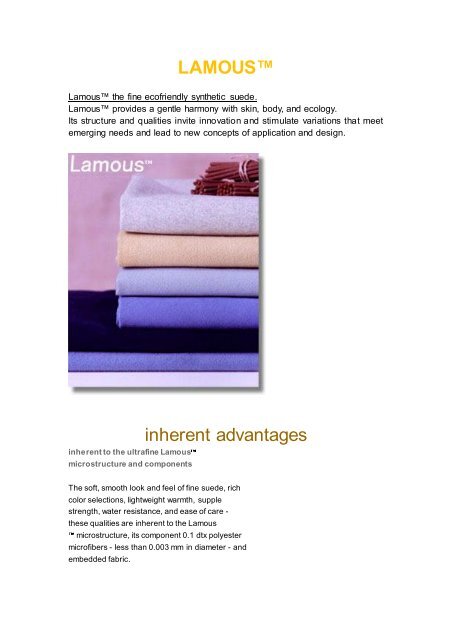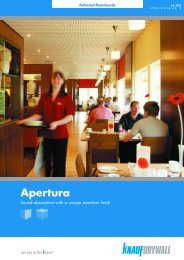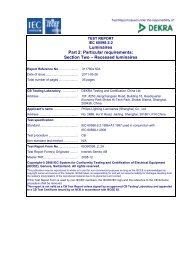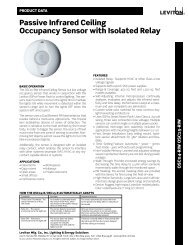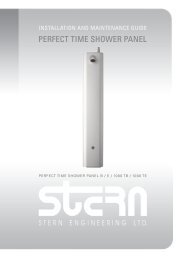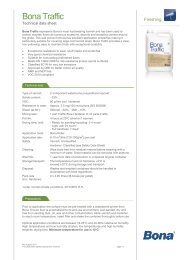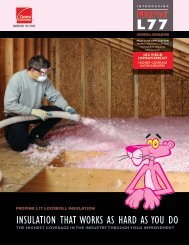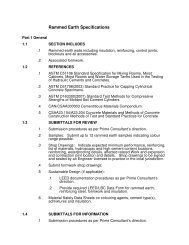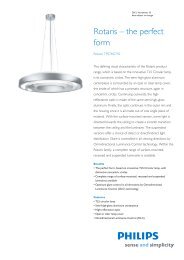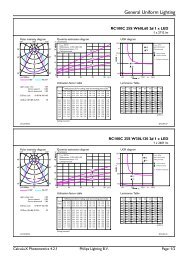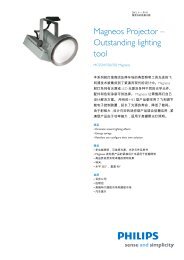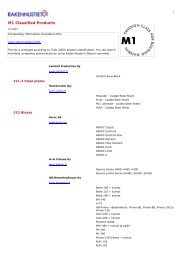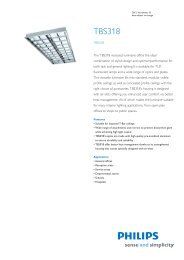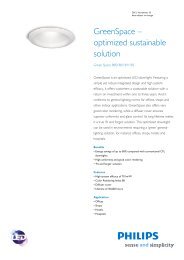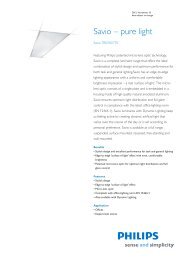LAMOUS™ inherent advantages - GIGABASE
LAMOUS™ inherent advantages - GIGABASE
LAMOUS™ inherent advantages - GIGABASE
Create successful ePaper yourself
Turn your PDF publications into a flip-book with our unique Google optimized e-Paper software.
LAMOUS<br />
Lamous the fine ecofriendly synthetic suede.<br />
Lamous provides a gentle harmony with skin, body, and ecology.<br />
Its structure and qualities invite innovation and stimulate variations that meet<br />
emerging needs and lead to new concepts of application and design.<br />
<strong>inherent</strong> to the ultrafine Lamous<br />
microstructure and components<br />
<strong>inherent</strong> <strong>advantages</strong><br />
The soft, smooth look and feel of fine suede, rich<br />
color selections, lightweight warmth, supple<br />
strength, water resistance, and ease of care -<br />
these qualities are <strong>inherent</strong> to the Lamous<br />
microstructure, its component 0.1 dtx polyester<br />
microfibers - less than 0.003 mm in diameter - and<br />
embedded fabric.
Soft,<br />
gentle touch<br />
Deep,<br />
true colors<br />
Lightweight warmth<br />
Supple<br />
strength<br />
Water resistance<br />
Ease of care<br />
Wealth of variations<br />
Ecoefficiency<br />
The look and feel of fine<br />
suede, through advanced<br />
microfiber spinning and<br />
processing technology.<br />
Elegant hues and shades, in<br />
single-color and melange,<br />
enabled by superior color<br />
take-up and development<br />
Optimum warmth, comfort,<br />
and breathability, <strong>inherent</strong> to<br />
the three-dimensional<br />
nonwoven microstructure.<br />
Supple grace and lithe<br />
comfort together with lasting<br />
strength imparted by the<br />
embedded fabric core.<br />
Resistance to hardening,<br />
shrinking, and color loss<br />
after water exposure or<br />
immersion<br />
Light, simple brushing for<br />
day-to-day care, and<br />
occasional washing or dry<br />
cleaning. See details<br />
inCare.<br />
Rich variety of types,<br />
grades, and applications, by<br />
optimization of the trilayer<br />
microstructure.<br />
Produced without organic<br />
solvents, using high-purity<br />
recycled polyester. See<br />
details in Ecoefficiency.
microstructure<br />
where the quality and <strong>advantages</strong> begin<br />
The trilayer Lamous microstructure consists of a core layer composed of a fine, thin "scrim" fabric,<br />
and front and back layers composed of three-dimensionally intermeshed ultrafine polyester microfibers,<br />
with polyurethane in the microfiber interstices.<br />
The core layer imparts high strength and dimensioal stability. The microfiber layers impart the soft,<br />
supple touch and resilience of the Lamous fabric. The three-dimensional microstructure enables a wide<br />
variety of types, grades, and fields of application<br />
Micrograph of Lamous cross-section<br />
Overview of Lamous ecoefficiency<br />
clean and easy on the environment
Lamous is distinguished by reduced resources consumption and freedom from<br />
environmentally burdening substances, in its production materials, production process,<br />
and composition,<br />
Production from high-purity recycled polyester<br />
The Lamous microfibers are produced primarily from high-purity recycled polyester.<br />
This purity is made possible by advanced chemical-process recycling,<br />
which eliminates the problems of polymer contamination associated with<br />
the conventional mechanical-process recycling.<br />
Freedom from organic solvents<br />
Lamous , in almost all types and grades*, is produced with aqueous-dispersion polyurethane,<br />
rather than conventional organic-solution polyurethane, to impart the resilience, abrasion<br />
resistance, and soft look and feel essential for fine synthetic suede. This eliminates the need<br />
for DMF** or other organic solvents.<br />
The Lamous microfibers themselves are produced by an advanced direct-spinning process.<br />
This also eliminates the need for organic solvents, which are generally necessary in the<br />
conventional compound-spinning processes to remove other process materials from the spun<br />
fibers.<br />
*Several special grades are made with organic-solution polyurethane, using DMF.<br />
**Dimethylformamide, an organic solvent that is widely used in industry but generally requires<br />
careful control to prevent its release into the environment.<br />
ISO 14001 certification for environmental management system<br />
Lamous production is certified under the ISO 14001 standard for environmental
management system.<br />
Oeko-Tex Standerd 100 certification for product safetyLamous is certified<br />
under the Oeko-Tex standard 100 for textile products<br />
advanced<br />
chemical-process recycling<br />
saving resources and heightening purity by depolymerization<br />
Lamous microfibers made with high-purity recycled polyester enable outstanding product<br />
quality while contributing to resources conservation.<br />
Unlike conventional material-recycling processes, which generally involve problems in polymer<br />
purity and degradation and thus limit the performance and applications of the resulting polyester,<br />
the chemical-recycling process enables depolymerization of polyester from PET bottles and<br />
polyester yarns, fabrics, and apparel, resulting in a pure polyester that is virtually indistinguishable<br />
from the virgin polyesters produced directly from petroleum components.<br />
The end result is a synthetic suede of high quality, purity, and ecoefficiency.
certified environmental management<br />
system<br />
under the ISO 14001 standard<br />
Lamous production has been certified since 2001 under the ISO 14001 standard for<br />
environmental management system, as part of the continuing commitment to environmental<br />
protection and preservation.<br />
ISO 14001 Certificate<br />
certified freedom from harmful substances<br />
under the Oeko-Tex standard 100<br />
Lamous has been certified for product safety under the<br />
internationally recognized Oeko-Tex Standard 100 for freedom<br />
of fiber and textile products from substances and properties<br />
which may be harmful to people or their environment.<br />
Substances and properties prohibited or controlled under Oeko-Tex Standard 100<br />
Banned MAK amines found in specific azo dyestuffs
Carcinogenic and allergy-inducing dyestuffs<br />
Formaldehyde<br />
Pesticides<br />
Phenols<br />
Chlorinated aromatic compounds<br />
Extractable heavy metals : Ni, Cd, Cr, CrVI etc.<br />
Color fastness<br />
pH-value<br />
Phthalates(in baby articles)<br />
Organic tin compounds(TBT and DBT)<br />
Emission of volatile components<br />
Odor<br />
Biocides and flame retardant finishes are regulated separately
Lamous production process<br />
the six production stages, from microfiber to synthetic suede
Lamous care and handling
easy care, lasting quality apparel<br />
Regular<br />
care<br />
Dust, moisture, and wrinkling can be removed quickly and easily.<br />
Dust and other particles........... Light brushing with ordinary clothes brush.<br />
Rain and water......................... Light patting with towel or cloth to absorb<br />
excess water,<br />
followed by hang-drying in shade.<br />
Light wrinkles........................... Hanging several hours on clothes hanger.<br />
Heavy wrinkles......................... Ironing at 120 or lower, under ironing cloth.<br />
Mold and insects...................... Unaffected; no care necessary.<br />
Washing or dry cleaning<br />
Lamous itself* can be either hand-washed or dry cleaned.<br />
Washing<br />
Washwater temperature 30 or lower, followed by gentle wringing to<br />
remove excess water and hang-drying in shade.<br />
Dry cleaning<br />
Normal dry-cleaning procedure, with stipulation that the cleaning agent<br />
be petroleum-based.<br />
*For any garment, the appropriate cleaning method will<br />
also depend on the other materials present in the garment


